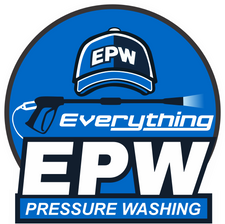What is the difference between Pressure Washing and Power Washing
Contents
Understanding pressure washing
Pressure washing uses a high-pressure water spray to clean surfaces, such as siding, decks, and driveways. It is an effective method for removing dirt, grime, mold, and other stubborn debris. The pressure can be adjusted to suit different cleaning needs, making it versatile for various surfaces. Professionals often use pressure washing to prepare surfaces for painting or staining, as it efficiently removes old paint and other coatings. However, it's important to note that pressure washing can be too powerful for some delicate surfaces, and may cause damage if not used correctly.
Defining power washing
Power washing uses a high-pressure mechanical sprayer to remove dirt, grime, mold, and other stubborn substances from surfaces. It typically utilizes hot water to achieve a deeper clean and is effective for areas with tough stains. The high pressure of the water stream can be adjusted based on the surface being cleaned, making power washing suitable for a variety of materials, including concrete, brick, and wood.
Key differences between pressure washing and power washing
Pressure washing uses regular water at high pressure to clean surfaces, while power washing uses heated water at high pressure.
- Pressure Washing
- Employs high-pressure water to remove dirt, grime, and mildew
- Does not use heated water
- Suitable for most regular cleaning tasks around the house
- Power Washing
- Utilizes heated water in addition to high pressure
- Effective for removing tough stains, grease, or chewing gum
- Suitable for heavy-duty cleaning tasks, particularly in industrial or commercial settings
Applications of pressure washing
Pressure washing is effective for a variety of outdoor cleaning tasks, such as patios, driveways, decks, and siding. It's also suitable for removing mold, mildew, dirt, and grime from surfaces. It's important to note that pressure washing is not recommended for delicate surfaces such as wood, stucco, or painted surfaces as the high pressure can cause damage.
Applications of power washing
Power washing is commonly used for cleaning larger surfaces, such as driveways, sidewalks, and parking lots. It is also effective for removing tough stains and grease on concrete, brick, and stone surfaces. Additionally, power washing is suitable for preparing exterior surfaces for painting by removing old paint, dirt, and other debris. The high-pressure water spray is ideal for removing mildew and algae from exterior walls, fences, and decks as well.
Equipment used in pressure washing
In pressure washing, a high-pressure mechanical sprayer is used to remove dirt, grime, mold, and loose paint from surfaces. The equipment typically includes a high-pressure pump, a hose, a trigger gun, and a variety of nozzles. The pump accelerates the water flow, which is then directed through the nozzle to increase the pressure. This powerful stream of water effectively cleans and can also be used for various outdoor cleaning tasks.
Equipment used in power washing
In power washing, a high-pressure mechanical sprayer is used to remove dirt, grime, mold, and loose paint from surfaces. The equipment typically includes a motor that drives a high-pressure water pump, a hose, and a trigger gun-style switch. Some models may also have a variety of nozzles to adjust the spray pattern and pressure for different cleaning tasks. The high-pressure water stream can be adjusted to suit the specific surface being cleaned, making power washing a versatile and effective method for exterior cleaning.
Pros and cons of pressure washing
Pressure washing is an effective way to clean outdoor surfaces, but it can also damage delicate materials. Here are some things to consider before deciding to use pressure washing for cleaning:
- Pros:
- Effective at removing tough dirt, grime, and mold.
- Can be used on concrete, brick, and other hard surfaces.
- Can save time and effort compared to manual scrubbing.
- Cons:
- Can cause damage to softer surfaces such as wood and siding.
- High pressure can cause injury if not used with caution.
- May require the use of chemicals, which can be harmful to the environment.
Pros and cons of power washing
Power washing is a powerful cleaning method that can quickly remove stubborn dirt and grime from various surfaces. One of the main advantages of power washing is its ability to tackle tough stains on concrete, brick, and other surfaces. It is also an effective way to prepare surfaces for painting or sealing. However, the high pressure used in power washing can potentially cause damage to certain materials, such as wood, siding, and delicate surfaces. It's important to carefully assess the specific needs of your cleaning project before deciding if power washing is the right choice.
Conclusion: Choosing the right method for your needs
Once you understand the differences between pressure washing and power washing, you can choose the right method for your specific needs. Here's a quick summary to help you make the right decision:
- Pressure washing is ideal for removing dirt, grime, and mold from surfaces like concrete, brick, and other hard surfaces. It uses high-pressure water to clean effectively.
- On the other hand, power washing is more suitable for removing stains and dirt that are deeply ingrained in surfaces, as it uses hot water in addition to high pressure.
Consider the specific cleaning requirements of your surfaces and the intensity of the cleaning needed when deciding between pressure washing and power washing.
